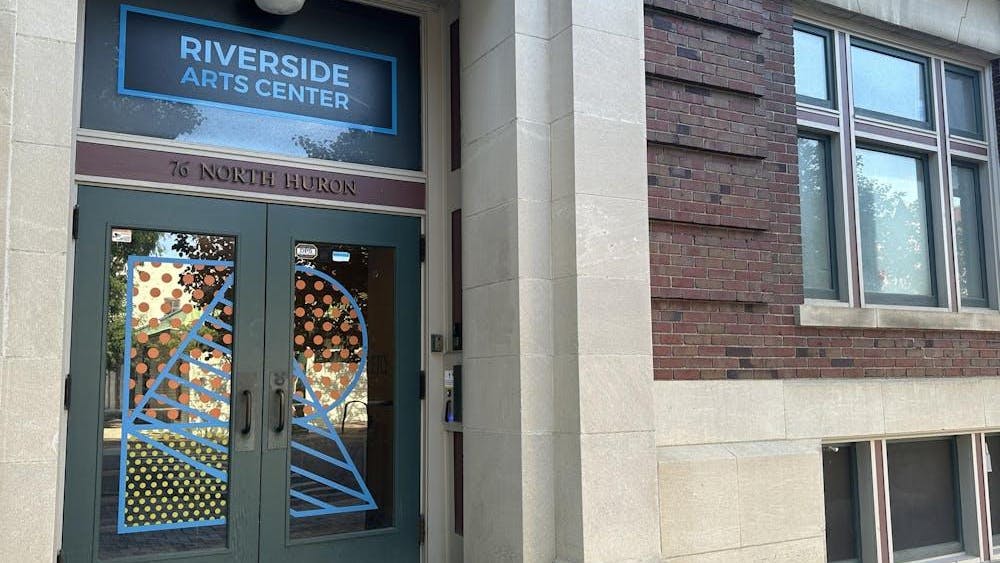Reported crime has gone down at Eastern Michigan University since 2005, as measured by the crimes the federal Clery Act requires universities to count and publish.
Bob Heighes, interim chief of police, said the decline is the result of “the commitment of the Board of Regents and the President of the University to safety.”
Heighes outlined four specific areas: the installation of more security cameras every year — there are now more than 400; increasing the number of safety officers from 25 three years ago to 33 now; increasing the number of dispatchers in that period from five to 10 and keeping students and other community members educated about how to prevent report crimes.
These changes, he said, were part of the university’s response to a December 2006 murder in an EMU dorm.
Alumni Adam Stephans recalled what he noticed before graduating last year regarding security.
“Increasing the presence of security people could help even more,” Stephans said. “I used to get emails
practically once a week about crimes and it seemed like less burglaries happened in more populated
areas.”
For the most part, however, current students and faculty said they feel safe because they are careful to walk in groups during the evening. Electronic locks that were applied to dorms and university apartments this year have received positive feedback as well.
Creative writing professor Carla Harryman, who has lived in Berkeley, Detroit and other large cities, said she “makes a point to work with a group after dark,” and feels “relatively safe” on campus.
Harryman also appreciates the escort service – Student Eyes and Ears for University Safety. She said walking with a student escort “increases a sense of community” on campus.
Heighes said the number of students working for SEEUS has remained the same.
The information about reported crimes appears in the EMU Department of Public Safety’s Annual Security Report. Heighes said measures by two other agencies, the Michigan Incident Crime Reporting and the Federal Bureau of Investigation Uniform Crime Reports, would show similar decreases.
The 69-page report includes information about university policies and practices including missing student notification, disciplinary actions for drug, alcohol and weapons violations, the violence intervention program and what to do if you have been sexually assaulted — including the EMU police guarantee, which promises “to do all we can to make the reporting of sexual assault as non-threatening as possible.”
The report also includes a section on reducing your risk of becoming a victim of sexual assault, and procedures for on-campus disciplinary action for sexual assault.
The first table shows the number of reported crimes from 2004-2010 during which crimes have declined 65 percent. Heighes said so far 2011 is on pace to show a continued decline in reported crimes.
The reports for these years show burglary, defined as “unlawful entry of a structure to commit a felony or a theft,” is consistently the most reported crime on campus. In 2005 there were 102 reported burglaries; in 2010, there were 29. All other crimes reported in 2010 were in single digits.
The report shows that motor vehicle theft went up 25 percent. However, the increase was from four thefts in 2008 and again in 2009, up to five thefts in 2010.
There are about 23,000 students, faculty and staff on campus, according to Heighes, who said “that’s a very, very low rate of auto theft, considering how many cars come and go from this campus every day.”
Senior Aaron Cochran, a transfer student from Schoolcraft Community College, stated he takes precaution before attending class at EMU.
“I double-check and triple-check my car to make sure things like my laptop are hidden,” Cochran said. “You can never be too careful.”
The report also contains information on arrests:
Liquor law violations consistently lead drug law violations and illegal weapons possession. Between 2004 and 2010, liquor law arrests were 119, 96, 105, 27, 55 and 55. Drug law arrests were 49, 32, 29, 36, 37, and 47. The numbers of illegal weapons possessions were 1, 6, 1, 1, 1 and 2.
Heighes said for the future, he’s expecting more crimes related to technology. He said that students “put all their personal information out on Facebook, and then the criminal element takes advantage.”
He is also using technology to defeat crime, particularly the security cameras, which he said “don’t necessarily prevent crime, but help us identify the criminals and catch them.”
He said he looks to others for help in predicting what criminal activity is moving into the university environment. In addition to meeting twice a year with other university safety officials, he said he watches “what’s happening in the high schools; they’re seeing more use of drugs and weapons.”
Heighes said members of the university community can improve campus safety in a simple way.
“Just call us,” he said. “If you see something suspicious, call us, don’t wait. If you need help, call us.”
Heighes also urged everyone on campus to sign up for RAVE alerts, wireless text messages used only in the event of campus-wide emergencies or campus closures.






